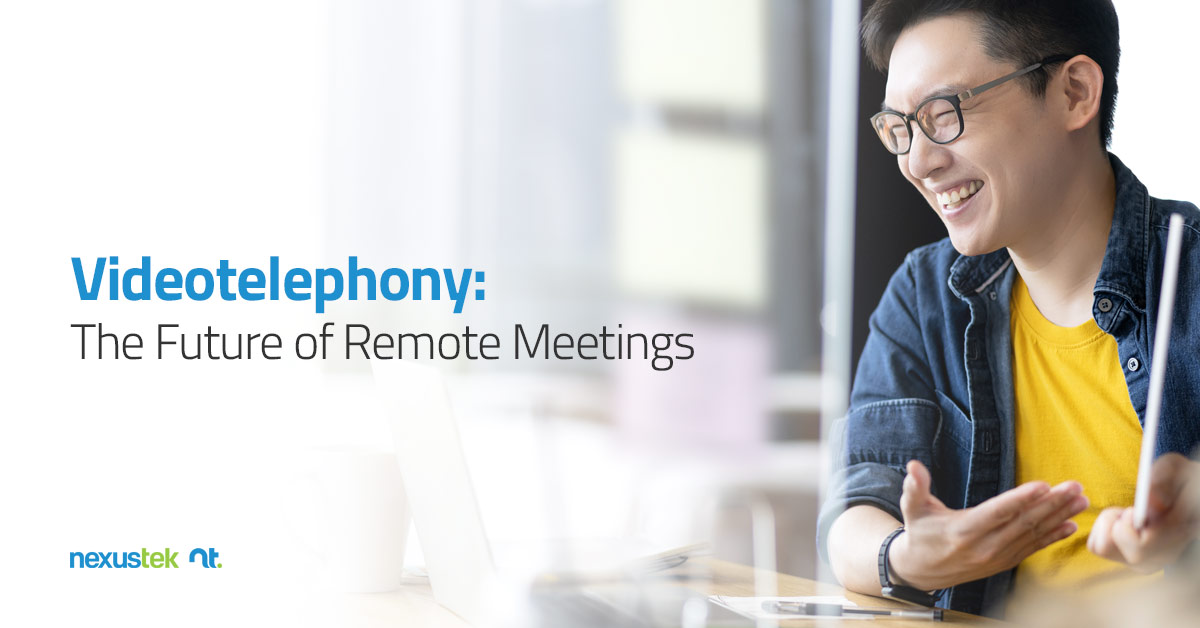READ TIME: 4 MIN

- September 22, 2021
Videotelephony: The Future of Remote Meetings
Microsoft Mesh
- Mixed Reality (Virtual Reality, Augmented Reality, & Holograms)
- A fully immersive head-mounted display (HMDs) like Microsoft HoloLens, HP Reverb G2, or Oculus Quest 2 for a 3D experience
- A PC, Mac, or an Android or Apple smartphone for a 2D experience
- Currently available for free, limited preview on HoloLens 2
“Feel presence” is one of the main promises Microsoft makes in its mixed reality platform, Mesh, introduced this past March. As a cross platform SDK built on Microsoft’s cloud computing platform Azure, Mesh can be optimized for whatever technologies users enable to connect, whether those are AR, VR, PC, Mac, or a smartphone that is using any Mesh-enabled app. Depth and dimension bring remote users into the same space where they can use AI-powered tools to manipulate spatial maps, designs, and 2D and 3D content in realtime. Users can choose to appear as either a 3D avatar or enable the photorealistic holoportation, both of which multiuser sync keeps updated within 100 milliseconds of latency. Are you ready to connect from anywhere with Mesh?
Google - Project Starline
- Mixed Reality (Virtual and Augmented Reality)
- Mix of cameras, depth sensors, and specialized hardware and software
- Currently available in select Google offices
Google’s hyper-realistic 3D video chat booth, Project Starline, creates the sensation that you’re sitting across from whoever you’re conferencing, whether they’re a few cities away or a few countries away. Computer vision, machine learning, spatial audio, and realtime compression play major roles in Starline. Using specialized cameras and depth sensors, Starline captures a person’s likeness from multiple perspectives to show their photorealistic, three-dimensional image on a 65” custom-developed light field display, or a “magic pane of glass,” as Steve Seitz, Director Engineering, Google, describes. To send such big data over existing networks, Google also developed compression and streaming algorithms to reduce the size of the data. The video booth is currently only available in select Google offices, so freshen up that resume if you want to experience Project Starline sooner rather than later.
Facebook – Horizon Workrooms
Tech Type:
- Virtual Reality
Equipment Needed:
- Oculus Quest 2 VR headset
Availability:
- Currently available for free in beta form for anyone with an Oculus Quest 2
Three new technologies, three new, mind-blowing ways of connecting on a truer, more natural level with colleagues miles away. As exciting as these developments are, they won’t be standard business tools for a few more years. In the meantime, businesses of all sizes must ensure that their remote and hybrid workforces have the proper tools and applications to improve communication and increase productivity.
Microsoft has the videotelephony and IT solutions to support and propel your remote workforce, from the video conferencing capabilities of Teams to remote collaboration tools like SharePoint and OneDrive. As a Microsoft Gold Partner ranking in the top 1% of all Microsoft partners nationally, NexusTek offers expert implementation of Microsoft Business Products to help businesses leverage the best resources in the market.
Connect your workforce. Connect with NexusTek.
